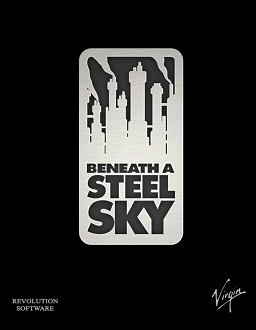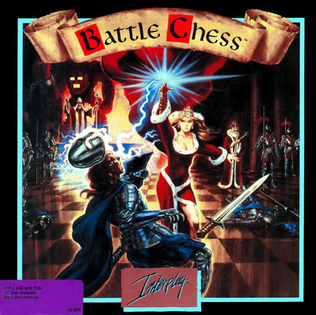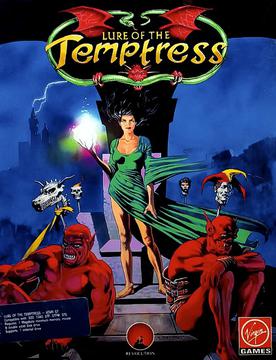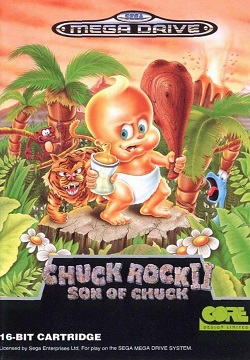
Amiga is a family of personal computers introduced by Commodore in 1985. The original model is one of a number of mid-1980s computers with 16- or 16/32-bit processors, 256 KB or more of RAM, mouse-based GUIs, and significantly improved graphics and audio compared to previous 8-bit systems. These systems include the Atari ST—released earlier the same year—as well as the Macintosh and Acorn Archimedes. Based on the Motorola 68000 microprocessor, the Amiga differs from its contemporaries through the inclusion of custom hardware to accelerate graphics and sound, including sprites and a blitter, and a pre-emptive multitasking operating system called AmigaOS.

Commodore International Corporation was a Bahamian home computer and electronics manufacturer with executive offices in the United States founded by Jack Tramiel and Irving Gould. Commodore International (CI), along with its subsidiary Commodore Business Machines (CBM), was a significant participant in the development of the home computer industry in the 1970s to early 1990s. In 1982, the company developed and marketed the world's second-best selling computer, the Commodore 64, and released its Amiga computer line in July 1985. Commodore was one of the world's largest personal computer manufacturers, with sales peaking in the last quarter of 1983 at $49 million.

The CDTV is a home multimedia entertainment and video game console – convertible into a full-fledged personal computer by the addition of optional peripherals – developed by Commodore International and launched in April 1991.

Beneath a Steel Sky is a 1994 point-and-click adventure game developed by British developer Revolution Software and published by Virgin Interactive Entertainment for MS-DOS and Amiga home computers. It was made available as freeware – and with the source code released – for PC platforms in 2003. Set in a dystopian cyberpunk future, the player assumes the role of Robert Foster, who was stranded in a wasteland known as "the Gap" as a child and adopted by a group of local Aboriginals, gradually adjusting to his life in the wilderness. After many years, armed security officers arrive, killing the locals and taking Robert back to Union City. He escapes and soon uncovers the corruption which lies at the heart of society.

Battle Chess is a video game version of chess with 2.5D graphics and fighting animations showing the result of one piece moving onto the square of another. It was developed and released by Interplay Entertainment for the Amiga in 1988 and ported to many other systems, including the 3DO Interactive Multiplayer, Acorn Archimedes, Amiga CD32, Amiga CDTV, Apple IIGS, Apple II, Atari ST, Commodore 64, MS-DOS, FM Towns, Nintendo Entertainment System, MacOS, PC-98, X68000, and Microsoft Windows. In 1991, Battle Chess Enhanced was released by Interplay for IBM PC compatibles and Macintosh with improved VGA graphics and a symphonic musical score played from the CD-ROM.

Ultima VI: The False Prophet, released by Origin Systems in 1990, is the sixth part in the role-playing video game series of Ultima. It is the third and final game in the "Age of Enlightenment" trilogy. Ultima VI sees the player return to Britannia, at war with a race of gargoyles from another land, struggling to stop a prophecy from ending their race. The player must help defend Britannia against these gargoyles, and ultimately discover the secrets about both lands and its peoples.

Lure of the Temptress is a point-and-click adventure game published by Virgin Interactive Entertainment in June 1992 for Atari ST, MS-DOS, and Amiga. It was the first game developed by Revolution Software and uses their proprietary Virtual Theatre engine. The player assumes the role of Diermot, a young peasant who has to overthrow an evil sorceress. The game was well-received and re-released as freeware on April 1, 2003.

The Three Stooges is a video game released by Cinemaware in 1987 for the Amiga based on the comedy trio of the same name. Players control Stooges Moe, Larry, and Curly in minigames based on Stooges films with the aim of raising enough money to save an orphanage. It was ported to the Apple IIGS, Commodore 64, MS-DOS, NES and Game Boy Advance. The game has been praised as a faithful adaptation of the Stooges films, but has been criticized for repetitive gameplay and limited replay value.

Dark Seed is a psychological horror point-and-click adventure game developed and published by Cyberdreams in 1992. It exhibits a normal world and a dark world counterpart, which is based on artwork by H. R. Giger. It was one of the first point-and-click adventure games to use high-resolution graphics, to Giger's demand. A sequel, Dark Seed II, was released in 1995.

Chuck Rock is a 1991 slapstick side-scrolling platform video game developed and published by Core Design for the Atari ST and Amiga computers. A Commodore 64 port followed in 1992 and an Amiga CD32 version in 1994. The game was subsequently published by Krisalis Software for the Acorn Archimedes. Virgin Interactive published the game for the Sega Mega Drive/Genesis, Master System, and the Game Gear. Sony Imagesoft published the game for the Sega Mega-CD, Super NES, and Game Boy.

Portal is a text-driven adventure with a graphical interface published for the Amiga in 1986 by Activision. The writing is by American author Rob Swigart, and it was produced by Brad Fregger. Ports to the Commodore 64, Apple II, and IBM PC were later released. A version for the Atari ST was announced and developed, but not published. Until recently, it was thought that a Macintosh version was similarly developed yet left unpublished. The published Macintosh version was rediscovered in 2021 by a game collector.

The Patrician is a 1992 historical trading simulation video game for Amiga, Atari ST and MS-DOS developed by Ascaron Entertainment and published by Triptychon Software. In the game, the player assumes the role of a merchant in any of several cities of the Hanseatic League, accumulating money, capital and consumer goods, and real estate, expanding his company, and furthering his career at home and abroad.

Wing Commander is the first game in Chris Roberts' space flight simulation Wing Commander franchise by Origin Systems. The game was first released for MS-DOS on September 26, 1990 and was later ported to the Amiga, CD32 (256-color), Sega CD and the Super Nintendo Entertainment System, and re-released for the PC as Wing Commander I in 1994. An enhanced remake Super Wing Commander was made for the 3DO in 1994, and later ported to the Macintosh.

Curse of Enchantia is a graphic adventure game developed and released by the British video game company Core Design for MS-DOS and the Amiga in 1992. The game tells the comic fantasy story of Brad, a teenage boy from modern Earth who was magically abducted to the world of Enchantia by an evil witch-queen. He needs to escape and find a way back to his own dimension.
The Amiga is a family of home computers that were designed and sold by the Amiga Corporation from 1985 to 1994.

Fahrenheit 451 is an interactive fiction game released in 1984 and based on the 1953 novel of the same name by Ray Bradbury. Originally released by software company Trillium, it was re-released in 1985 under the company's new name Telarium.
Saturnino "Pepe" Moreno Casares is a Spanish comic book artist, writer and video game developer who has been drawing professionally in Spain, other countries in Europe and in the US since the 1970s. He is best known in the United States for his 1990 digital graphic novel, Batman: Digital Justice, published by DC Comics.

Chuck Rock II: Son of Chuck is a slapstick side-scrolling platform game developed by Core Design and published by Virgin Interactive Entertainment in 1993 for the Amiga, CD32, Game Gear, Sega CD, Master System, and Mega Drive/Genesis.

The Amiga CD32 (stylized as Amiga CD32, codenamed "Spellbound") is a 32-bit home video game console developed by Commodore and released in Europe, Australia, Canada, and Brazil. It was first announced at the Science Museum in London on July 16, 1993, and was released in September of the same year.

















